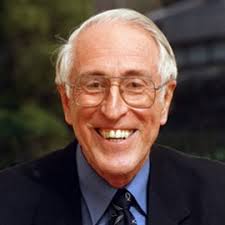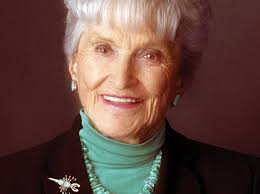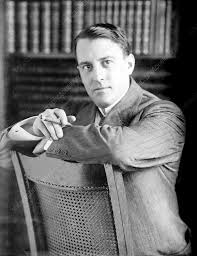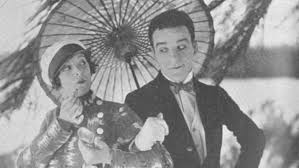Time to Read: 10 minutes
Hearing loss has been with us for as long as humans have had ears. But over the past 130 years there have been incredible advances in technology.
In this article, we play tribute to four pioneers in the industry. Their names may not be as well known as Thomas Edison, Alexander Graham Bell or John Logie Baird but without their perseverance and drive, the world would be poorer.
Professor Graeme Clark

Professor Clark is perhaps the best known on our list. The Australian Professor of Otolaryngology at the University of Melbourne is credited with inventing the multiple-channel cochlear implant.
A cochlear implant uses electric signals which directly stimulate the auditory nerve in people with profound hearing loss. The idea for such a device had been around since the late 1950s with scientists looking at ways to make the device a reality.
Clark's first multi-channel cochlear implant operation was done at the Royal Victorian Eye and Ear Hospital in 1978 by Clark and Dr Brian Pyman.
At the end of 1978, Clark and colleague Dr Yit Chow Tong discovered speech coding strategy was not unique to one person's brain response patterns, and that the memory for speech sounds could persist for many years after the person became deaf.
Marion Downs
 Universal screening of new-borns for hearing loss is a relatively recent phenomenon. In fact it was only in 2000 that the first large-scale new-born hearing screening program was conducted in Australia.
Universal screening of new-borns for hearing loss is a relatively recent phenomenon. In fact it was only in 2000 that the first large-scale new-born hearing screening program was conducted in Australia.
Identifying hearing loss as early as possible is now recognised as early intervention results in significantly better speech and language outcomes than delayed intervention. The critical age to commence intervention may be as early as six months.
That we have the program at all is due to the advocacy of American audiologist Marion Downs (January 26, 1914 – November 13, 2014) Professor Emerita at the University of Colorado Health Sciences Center, Denver.
She pioneered universal new-born hearing screening in the early 1960s, then spent more than 30 years trying to convince her peers to adopt the testing in hospitals and to place hearing aids on infants who showed hearing loss.
She worked to alert the medical world to the developmental problems associated with childhood deafness. As a result of her efforts, 95 percent of all new-borns in America today are screened for hearing loss. She published two books and over 100 articles on the subject, and lectured and taught extensively throughout the United States and overseas.
Miller Reese Hutchinson
 The origin of the hearing aids we know today was the brainchild of Miller Reese Hutchison (August 6, 1876 – February 16, 1944), an American electrical engineer and inventor. In addition to the hearing aid, he is also credited with inventing the electric vehicle horn.
The origin of the hearing aids we know today was the brainchild of Miller Reese Hutchison (August 6, 1876 – February 16, 1944), an American electrical engineer and inventor. In addition to the hearing aid, he is also credited with inventing the electric vehicle horn.
He developed some of the first portable electric devices, such as a vehicle horn and a hearing aid.
Hutchison assembled an electrical hearing aid for one of his friends called the "akouphone" in 1895. He was so dedicated to helping his childhood friend that Hutchinson also attended anatomy classes at the Medical College of Alabama to better understand how the ear worked.
By 1902, his desk-sized hearing aids were a little more portable, thanks to batteries but still it had limited frequency and dynamic range. In 1905, Hutchinson sold the rights to his invention.
Emerson Romero
 We take subtitled films for granted but it took a deaf actor, Emerson Romero (August 19, 1900 – October 16, 1972) to lead the way.
We take subtitled films for granted but it took a deaf actor, Emerson Romero (August 19, 1900 – October 16, 1972) to lead the way.
Romero was a Cuban-American silent film actor who worked under the screen name Tommy Albert. The end of the silent film era, meant those who were hard of hearing could no longer enjoy going to the pictured.
Romero’s own film career came to an end by 1928, but that was just the beginning. Along with friends John Funk and Sam Block, Romero started the Theatre Guild of the Deaf in 1934 and became editor of the publication Digest of the Deaf. He started a new career as a sheet-metal and template maker for Republic Aviation, helping to produce the Republic P-47 Thunderbolt fighter aircraft used in World War II.
After the war, Romero bought several films and experimented with providing captions by slicing film strips and inserting images with captions between picture frames, just like the silent movie title cards. It was crude and ruined the flow of the film, but the idea was enough to attract the attention of Edmund Burke Boatner, the superintendent of the American School for the Deaf. Boatner created more practical methods of captioning and would co-found the U.S. government-funded Captioned Films for the Deaf program.
But that wasn’t the end of Romero’s inventiveness. He created a vibrating alarm clock among a number of products for the deaf including smoke detectors. In 1970 the New York City Civic Association of the Deaf honoured Romero with its annual civic achievement award "in recognition of his tireless efforts and dedication to the deaf".